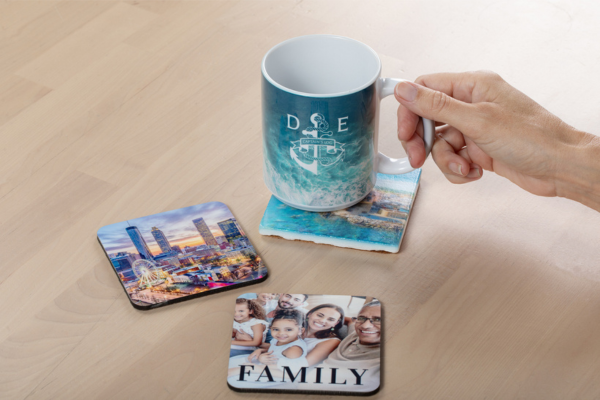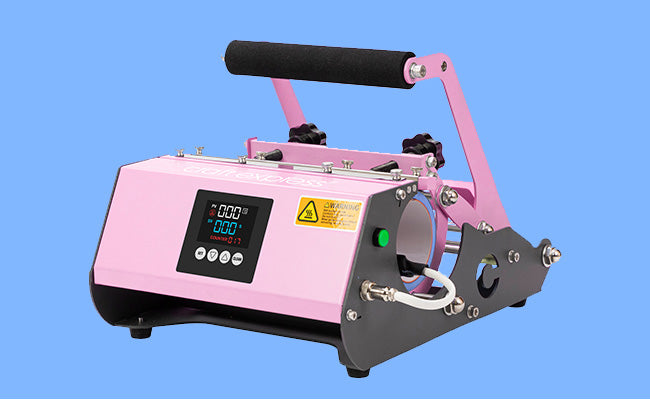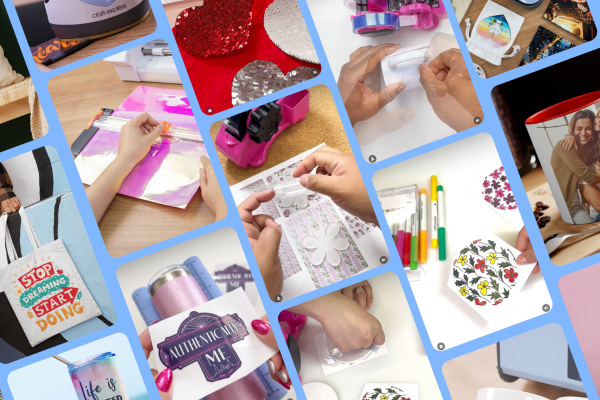
What is sublimation printing?
Sublimation printing is a heat based method that turns solid ink into a gas so your design bonds with polyester or a polymer coated surface. The color becomes part of the item, not a layer that sits on top. That is why sublimation prints look vibrant, feel smooth, and hold up to everyday use. You print your art with special ink on sublimation paper, place it against the blank, then use a heat press to apply time, temperature, and pressure. It works on white or light colored polyester fabric and on hard goods that have a polymer coating, like mugs, tumblers, and photo panels. If you are new, the core steps are simple, and you can get great results with a few basic tools and clear settings.
How sublimation printing works
Sublimation ink is a dye that turns into gas when heated. Under heat and pressure, the gas moves into polyester fibers or a polymer coating. As the item cools, the gas turns back into a solid within that surface. The result is a print that will not crack or peel because it is inside the material.
A few key facts help this click.
-
White or light surfaces give the best color. Sublimation does not print white.
-
Polyester is the target. On fabric, more polyester means bolder color. A shirt with 100 percent polyester gives the brightest result. A lower polyester blend will look more vintage.
-
Hard goods must have a sublimation ready coating. Look for blanks made for sublimation.
What you need to start
You can begin with a short list of tools and supplies.
-
A heat press sized for your projects. A flat press covers shirts and coasters. A mug or tumbler press wraps drinkware evenly.
-
Sublimation paper made for your printer and inks.
-
Sublimation ink if you plan to print your own transfers.
-
Heat resistant tape, protective paper, and a lint roller.
-
Sublimation ready blanks such as mugs, tumblers, coasters, keychains, or polyester shirts.
-
Basic safety items, like heat gloves and a clear work area.
Start with one category, for example mugs, learn the settings, then expand.
Step by step, your first project:
Here is a simple path you can use for most blanks. Always check the instructions for your specific item first.
-
Design and size
Create your art at the final size and use a high resolution. Mirror the image before printing for most projects. -
Print
Print on the bright white side of your sublimation paper using the right media settings. Let the ink dry. -
Prep the blank
Wipe away dust. For shirts, use a lint roller. For mugs and tumblers, clean with alcohol and let dry. -
Align and secure
Place the print face down on the blank. Use heat resistant tape so nothing can shift. -
Press
Use recommended time, temperature, and light to medium pressure. Keep the surface covered with protective paper to catch any ink. -
Cool and reveal
Remove the paper while warm unless your blank says to cool first. Avoid touching the print while it is hot.
Time and temperature cheat sheet for sublimation printing
These are example ranges you can use as a starting point. Your blank and press may vary, so follow the maker notes for exact settings.
|
Blank type |
Temperature |
Time |
Pressure |
|---|---|---|---|
|
Polyester shirt |
380 to 400 F |
35 to 60 sec |
Light to medium |
|
Hardboard coaster |
380 to 400 F |
60 to 90 sec |
Medium |
|
Aluminum photo panel |
375 to 400 F |
60 to 90 sec |
Light to medium |
|
Ceramic tile |
360 to 400 F |
180 to 300 sec |
Medium |
|
Mug in mug press |
360 to 400 F |
180 to 300 sec |
Firm wrap |
|
Tumbler in tumbler press |
360 to 400 F |
60 to 120 sec |
Firm wrap |
|
Glass item |
360 to 390 F |
120 to 240 sec |
Light |
Tips for better color and consistency.
-
Pre press fabric for a few seconds to remove moisture.
-
Use fresh protective paper for every press to avoid marks.
-
If you see faded areas, try a little more time or pressure. If you see yellowing, lower the temperature.
Materials that work, and what to avoid
Best choices
-
Polyester shirts, jerseys, and performance wear
-
Polymer coated mugs, tumblers, water bottles, coasters, and ornaments
-
Polymer coated aluminum and photo panels
-
Polyester canvas and some pillow covers
Avoid or use with care
-
Cotton and dark fabric do not work with standard sublimation alone
-
Uncoated ceramic, glass, wood, or metal will not accept the dye
-
Items with wax, oil, or dust can block the transfer
When you shop, look for the words polyester or sublimation coated
Troubleshooting common issues:
-
Dull or faded color
Increase time in small steps, confirm you are at the right temperature, and check that your blank is sublimation ready. -
Ghosting or shadows
The paper moved during pressing. Use more heat resistant tape, keep the press steady, and allow a smooth open. -
Brown spots or scorch marks
Lower the temperature or reduce time. Make sure your protective paper fully covers the print area. -
Banding lines
Run a print head cleaning cycle and print at a higher quality setting. -
Blowout ink on the edges
Trim the paper closer to the design and use clean protective paper to catch any extra dye.
Is sublimation printing right for you?
Choose sublimation if you want color rich, durable designs with a soft feel and a clean finish. It is great for team shirts, gifts, photo products, and small business orders. The learning curve is gentle if you start with one type of blank and practice a few runs.
FAQ
Can I sublimate on cotton shirts
Not with standard sublimation alone. The dye needs polyester to bond. For cotton, choose heat transfer vinyl or explore specialty processes like VersiFlex.
Why does my print look lighter after pressing
On polyester it should look bright. If it is light, check the blank coating, raise time slightly, or confirm your press reaches the set temperature.
Do I need a special printer
You need either a dedicated sublimation printer with sublimation ink or pre printed sublimation transfer sheets. Both can produce great results.
What color blanks work best
White or very light colors. Sublimation does not print white, so light bases keep colors true.
How long do sublimation prints last
On coated hard goods and high polyester fabric, the print is built into the surface, so it holds up very well under normal use and washing.
Internal Links
Closing
You now know what sublimation printing is, how it bonds color into polyester, and the simple steps to make your first project. Pick one blank you love, gather the basics, and try a small test print. When you are ready, explore presses, paper, and blanks that fit your ideas, then press with confidence and enjoy the results.




Leave a comment
This site is protected by hCaptcha and the hCaptcha Privacy Policy and Terms of Service apply.